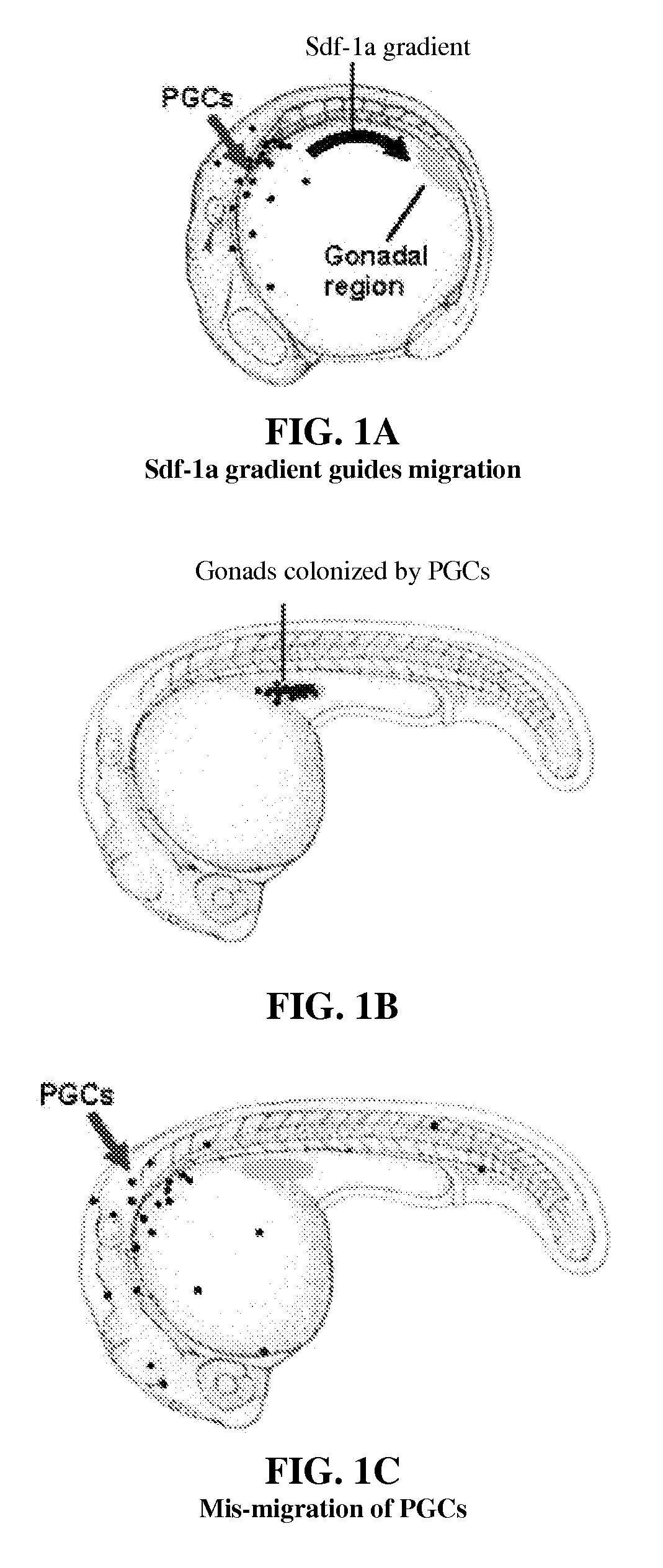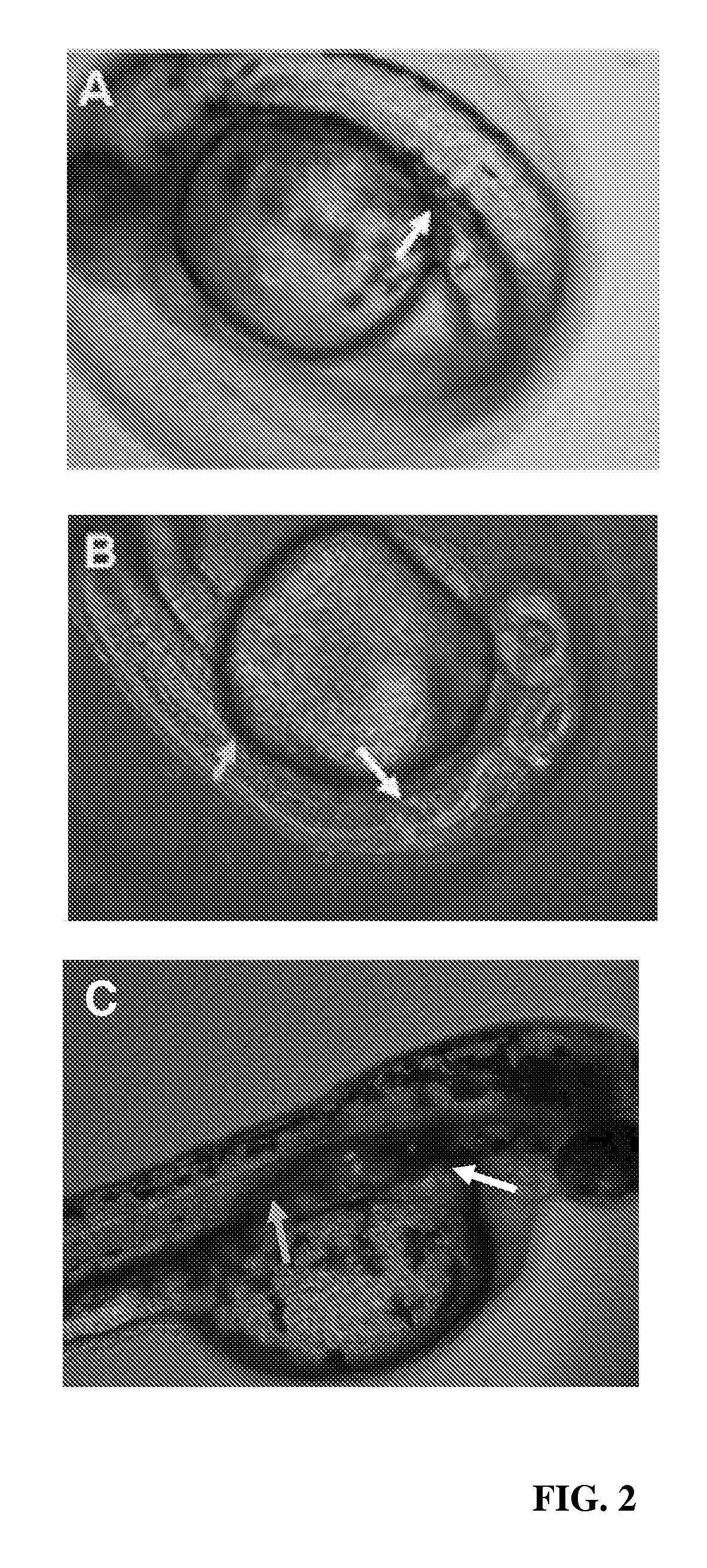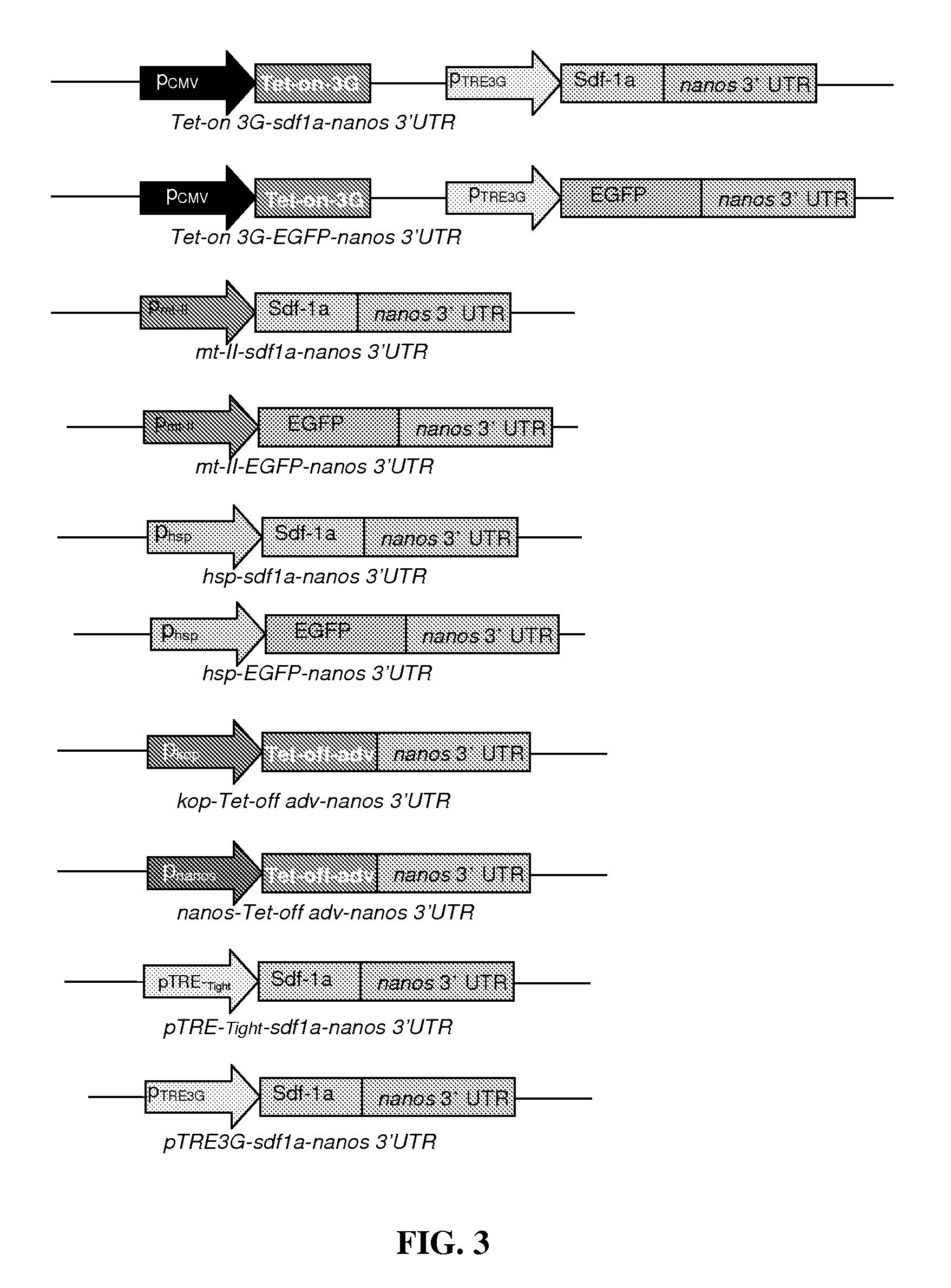Efficient sterilization of fish by disruption of germ cell development
a technology of germ cell and sterilization method, which is applied in the direction of peptides, chemokines, animal/human proteins, etc., can solve the problems of affecting the survival rate of fish, so as to prevent the genetic contamination of wild fish populations
- Summary
- Abstract
- Description
- Claims
- Application Information
AI Technical Summary
Benefits of technology
Problems solved by technology
Method used
Image
Examples
example 1
Targeted Expression of DsRED in PGCs
[0074]The present inventors have performed targeted expression of Discosoma sp. red fluorescent protein (DsRED) in PGCs of zebrafish embryos. In multiple experiments, the DsRED was expressed in PGCs under the control of various promoters: a vasa promoter, a kop promoter, and a nanos promoter. All transfections resulted in specific red fluorescence of PGCs.
example 2
Targeted Expression of DsRED and SDF-1a in PGCs
[0075]Plasmid constructs sdf-1a-nanos-3′UTR and DsRed-nanos-3′UTR were constructed in vitro.
[0076]DsRed-nanos-3′UTR was injected into a one-cell stage embryo and PGC position was detected by measuring fluorescence. Results are demonstrated in FIG. 2A, where the normal migration of PGCs was observed.
[0077]The plasmid constructs of sdf-1a-nanos-3′UTR and DsRed-nanos-3′UTR were combined to form an RNA mix that was injected into one-cell stage embryos. Results are demonstrated in FIG. 2B, where the nanos-3′UTR was observed to direct expression to the PGCs with particularity and the overexpression of Sdf-1a by the PGCs was observed to prevent the PGCs from following a normal migration pattern.
example 3
Targeted Expression of DsRED and Lif in PGCs
[0078]Plasmid constructs lif-nanos-3′UTR and DsRed-nanos-3′UTR were constructed in vitro.
[0079]DsRed-nanos-3′UTR was injected into a one-cell stage embryo and PGC position was detected by measuring fluorescence. Results are demonstrated in FIG. 2A, where the normal migration of PGCs was observed.
[0080]The plasmid constructs of lif-nanos-3′UTR and DsRed-nanos-3′UTR were combined to form an RNA mix that was injected into one-cell stage embryos. Results are demonstrated in FIG. 2C, where the nanos-3′UTR was observed to direct expression to the PGCs with particularity and the overexpression of Lif by the PGCs was observed to prevent the PGCs from following a normal migration pattern.
PUM
| Property | Measurement | Unit |
|---|---|---|
| area | aaaaa | aaaaa |
| fluorescent | aaaaa | aaaaa |
| fluorescence photomicrograph | aaaaa | aaaaa |
Abstract
Description
Claims
Application Information
 Login to View More
Login to View More - R&D
- Intellectual Property
- Life Sciences
- Materials
- Tech Scout
- Unparalleled Data Quality
- Higher Quality Content
- 60% Fewer Hallucinations
Browse by: Latest US Patents, China's latest patents, Technical Efficacy Thesaurus, Application Domain, Technology Topic, Popular Technical Reports.
© 2025 PatSnap. All rights reserved.Legal|Privacy policy|Modern Slavery Act Transparency Statement|Sitemap|About US| Contact US: help@patsnap.com



